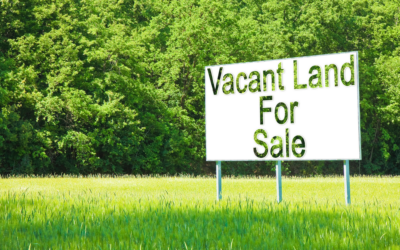One reason why people prefer to invest money—increased wealth. The motivation will definitely differ for every investor, some want to retire early, some want to build a flourishing empire, and more, but the primary reason is simple—making more money.
And, the real estate industry has witnessed a flourishing growth in recent years. A tangible property, real estate is the perfect example of investment properties. These are purchased only with the sole intent of making money.
However, some people buy real estate only to sell them within a short span of time. Irrespective of the reason, when it comes to real estate, it is important to measure the ROI (Return on Investment) to understand the profit margin for the property.
It is important to understand the variable component, what return on investment should look like, and some basic understanding. Before we put the ‘ROI’ under scrutiny point by point, here is the basic understanding to get you started:
- The ROI will help you understand how much profit or money you are making on the investment you have made over the cost of investment.
- If you want to calculate the return percentage on your investment (preferably cash purchase), consider the net profit on your investment and then divide the same with the original price.
- Other factors can affect your ROI, such as maintenance and repair costs, and other regular expenses. Therefore, it is important to take these into consideration.
- If you own a mortgage, you will have to consider the mortgage and down payment as well.
ROI: What does it mean?
In layman terms, ROI means calculating the amount of profit you have made as a percentage to the amount you have invested in a property. It shows how effectively the profit margin has increased with the investment. Understanding the ROI will help the investors to understand if investing money in your particular investment is worthwhile or not.
The return on investment can be for anything jewelry, stocks, savings bank account, or real estate. And, this is where the tricky part comes, calculations for the ROI can be easily manipulated—there are many variables that can be excluded or included, without being noticed. This part will become difficult especially when the investor will have to take a mortgage for the property or pay via cash.
The formula for calculating the ROI is simple:
ROI = Annual Returns / Investment Cost
For calculating the profit on the investment, first, consider the total investment return and subtract that with the total investment cost.
Remember that ROI comes under the profitability ratio, it will give you the profit made on the investment and will be represented in percentage.
For calculating the return on investment percentage, consider the net profit made on the investment and then divide that amount with the original cost.
ROI: What are the benefits?
The primary reason for depending on this calculation metric is because of its simple formula that helps you calculate and understand ROI.
This simple formula further helps the investors decide whether or not they want to go ahead with their investments.
Even though simple in nature, the ROI formula is versatile. For instance, you may often use this formula for calculating the estimated amount of your rental property.
However, this formula is also applicable for understanding returns coming from different properties. As an investor, you can easily differentiate between high-performing and low-performing investments.
This helps in optimizing your investments and ensuring that you channel your money only towards high-yielding properties.
ROI: What are the limitations of the formula?
While the aforementioned formula is ideal for most users, it does come with this own set of following limitations:
- The ROI formula, will not help in adjusting the risk. Depending on the condition and type of property, the investments will often be correlated with the risk. Therefore, more potential ROI means more risk involved. For instance, an investor who is looking at a 20% return, will have to prepare for higher risks, as compared to someone aiming for a 5% return. Often times, people only focus on the eventual outcome, instead of the potential risks involved, which leads to unexpected results in the end.
- For rental properties, calculating ROI is a challenge because investors have the option of removing the mortgage or paying cash for financing their investments. For accurate ROI calculation, certain variables can be either excluded or included depending on the financing method of your investment—which will have some impact on the investment cost. For instance, if you are using the loan option for financing, investors will have to consider the mortgage interest value in their calculation. Also, if you forget adding the expected costs (maintenance, renovation, interest), you will notice exaggerated numbers in your ROI.
Therefore, for rental properties, there are two ways for calculating the ROI:
- The Cap Rate
When it comes to investment properties—purchased in full cash—real estate investors often depend on the cap rate. In this method, the property’s rate of interest will be measured for a period of one year.
That means this method will never give a complete overview of how the property has performed in the past several years or predict future performance.
The cap rate calculation of the rental property is simple, divide the net operating income (as per the current market standards) and then multiply the amount by 100 to get the percentage value.
Cap rate = Net Operational Income / Property Current Value
Now, before you begin calculating this amount, you need to identify the current market value of the property. This can be easily found out with the help of comparative market analysis or hiring a professional to appraise the value.
- The Cash on Cash Return Rate
This is one of the most widely used ROI formulae in the market. Also, this method is used by real estate investors who opt for a mortgage for financing their investments. The formula is:
Cash on Cash Return = Yearly Cash Flow (Pre-Tax) / Overall Cash Invested
The only tricky part in this formula is calculating the yearly cash flow (pre-tax), which can be done by the following:
Total rental earned + add on income from other properties – operational expense – vacancy
Once you have this number, you need to calculate the total amount of money you have invested in the current real estate property. To get this amount, perform the following math:
Down payment + property renovation + closing amount
Voila, you will have all the numbers that you need to get the actual number in question, thereby giving you further clarity.
ROI: The Importance
Like we have mentioned earlier in this post, understanding the ROI on your investments, especially when it comes to real estate, gives you the ability to be more informed.
Before you decide to buy more property, you will have a thorough idea about the costs and expenses involved and know the rental income as well. Making it easier for you to draw comparisons with other properties.
Narrow down the property you like, and then sit back and calculate the money you will be making through it.
During this, if you realize that your expense or cost is exceeding the total ROI, it is your decision to charge ahead—hoping that you will make a profit soon—or if selling is the best option in the current scenario.
ROI: Other Considerations
If you own a rental property, it will always come attached with additional expenses—repairs, renovations, maintenance—which are a part of the calculation making causing minor dents in the ROI.
Assuming that the rental property is rented out for 12 months. Mostly, loopholes appear between low income and fewer tenants and factoring that duration in the calculation.
We all know the one rule that governs the rental property, the more the mortgage loan, the higher the ROI. Alternatively, the more amount is paid in cash, the lesser you borrow, which means lower ROI because the initial cost is higher. This means that good financing will help in boosting the property ROI in a short span of time.
If you have multiple properties, then make sure that you are consistent in measuring the ROIs for these properties. For instance, if you consider a single property’s equity during the evaluation of one property, then you should consider including this equity while calculating for other properties ROI for other properties as well and make it a realistic real estate portfolio.
ROI: The Verdict
When it comes to using these formulas, investors are often found debating about the best formula to get accurate results. However, realistically speaking, accurate results can be achieved only when all the three formulas are used in a combination. So, to understand the best ROI for your property, use the cap, ROI calculator, and cash on cash flow together.





